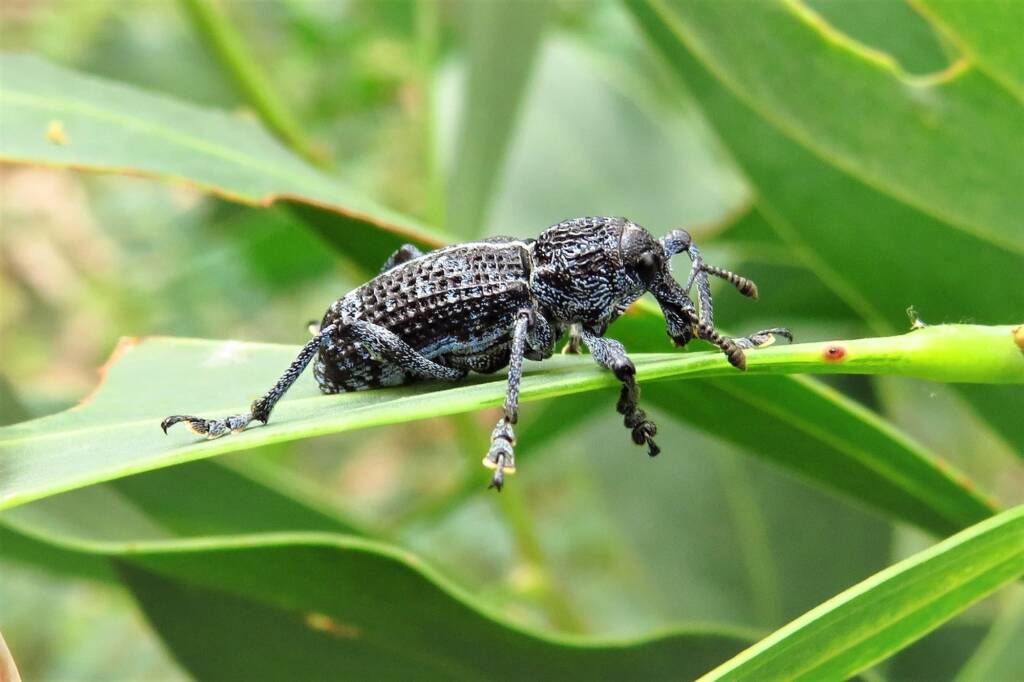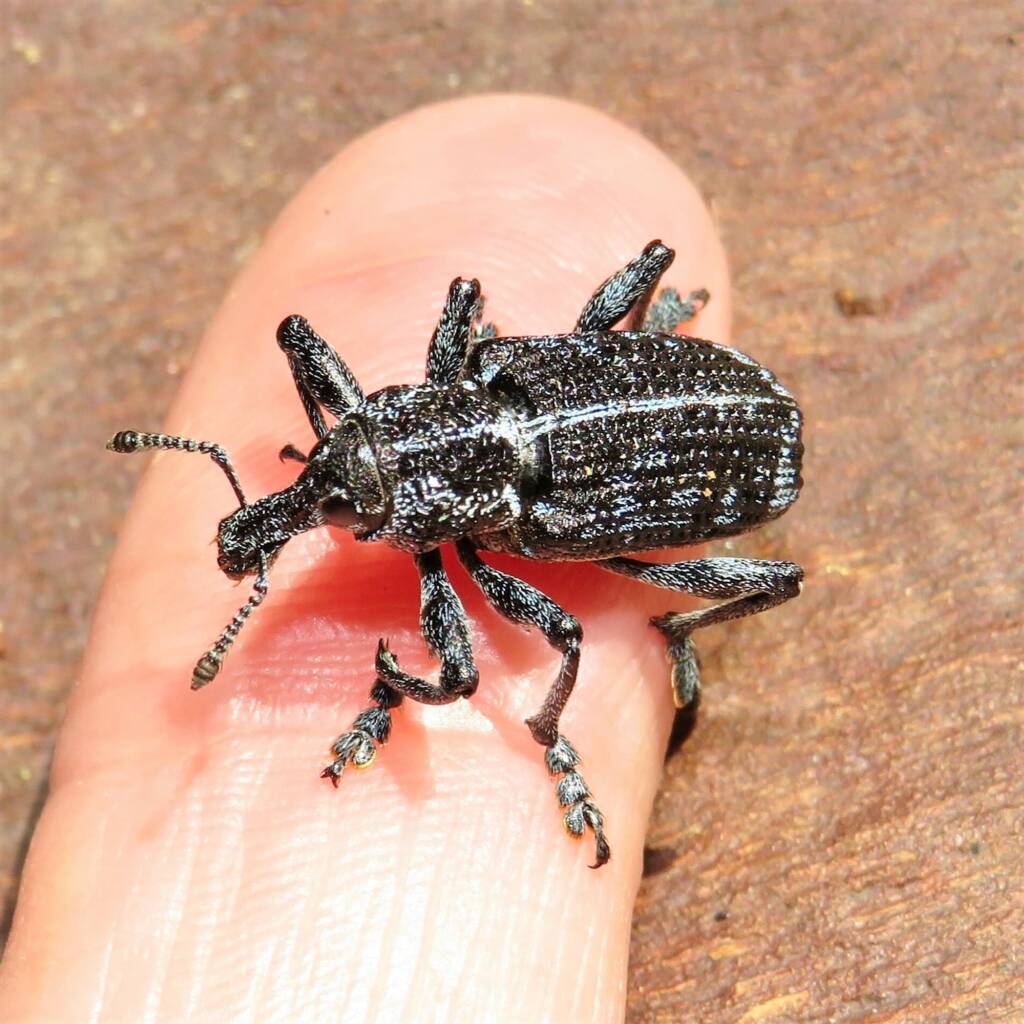CurculionidaeChrysolopus spectabilis (Botany Bay Diamond Weevil) Lixus Perperus lateralis (White-striped Weevil)
Botany Bay Diamond Weevil (Chrysolopus spectabilis), whose other common names include Botany Bay Fiamond Beetle and Sapphire Weevil, belongs to the true weevils family Curculionidae. The adult measures up to 25 mm long and has distinctive metallic green and black scales, although the colouration varies across the year, with those later in the year becoming more blue. Some have less colour with blue-white or white markings or more black.

Chrysolopus spectabilis is found on some of the species of Acacia, including Acacia baileyana (Cootamundra Wattle), Acacia dealbata (Silver Wattle), Acacia melanoxylon (Australian Blackwood) and the Acacia longifolia (Golden Wattle).
It was one of the first insects from Australia to be described when it was discovered during James Cook’s first voyage.

The snout is about as long and strongly curved. The geniculate antennae arise from halfway along the snout and end in a small club. (The term “geniculate antennae” refers to antennae that are bent or sharply hinged — the word “geniculate” derives from the Latin genu, meaning knee).

The adult of the species are found active both day and night (mostly during the warmer months or November to March).


- Scientific classification
- Kingdom: Animalia
- Phylum: Arthropoda
- Subphylum: Hexapoda
- Class: Insecta
- Informal: Pterygotes
- Order: Coleoptera
- Suborder: Polyphaga
- Superfamily: Curculionoidea
- Family: Curculionidae
- Subfamily: Cyclominae
- Tribe: Aterpini
- Genus: Chrysolopus
- Species: Chrysolopus spectabilis
Footnote & References
- Many thanks for ID to Tony Eales, member of Australasian Beetles Only, Facebook group, https://www.facebook.com/groups/1180404322409639
- Many thanks for ID to Andrew Parker, member of NT Field Naturalists’ Club Inc, Facebook group, https://www.facebook.com/groups/ntfieldnaturalistsclub/
- Lixus Fabricius, 1801, Atlas of Living Australia, https://bie.ala.org.au/species/https://biodiversity.org.au/afd/taxa/df1ad94e-0ea3-4f23-97c6-c04d13fc0087
- Genus Lixus, iNaturalistAU, https://inaturalist.ala.org.au/taxa/71157-Lixus
- Genus Lixus, ausemade, iNaturalistAU, https://inaturalist.ala.org.au/observations/189313196
- All Weevil (Curculionoidea) sightings, NatureMapr, https://canberra.naturemapr.org/categories/239
CurculionidaeChrysolopus spectabilis (Botany Bay Diamond Weevil) Lixus Perperus lateralis (White-striped Weevil)
ColeopteraAmarygmus sp Anoplognathus sp Aphanestes gymnopleura Buprestidae Cerambycidae Coleoptera (Beetles) Curculionidae Digitonthophagus gazella Dung Beetle Eretes australis Helea scaphiformis Johannica gemellata (Pandorea Leaf Beetle) Ladybirds (Beetles) Lepidiota Lucanidae Neospades sp Lycidae Omorgus Paropsine Beetle Paropsisterna sp Pittosporum Leaf Beetle (Lamprolina impressicollis) Protaetia fusca Pterohelaeus sp Rhipiceridae Scarabaeidae Xylophilostenus octophyllus
InsectsBees Beetles Blattodea Butterflies Coleoptera Cicada Crabronidae Diptera Dragonflies & Damselflies Formicidae Hemiptera Heteroptera (True Bugs) Mango Planthopper Moths Orthoptera Orthopteroid Processionary Caterpillar Stink Bugs, Shield Bugs and Allies Syrphidae Wasps Water Scorpion (Laccotrephes tristis) Witchetty Grub
